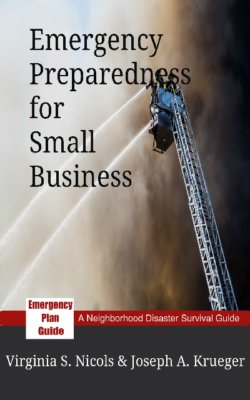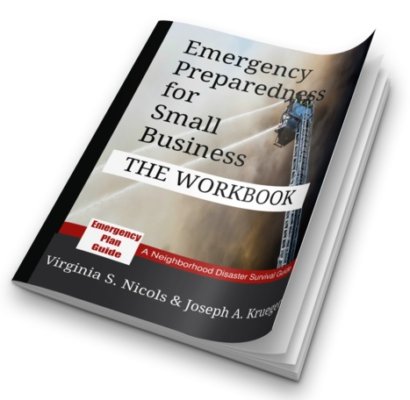
Dear Business Owner,
When you’re thinking about protecting yourself and your family from disaster, the decisions are pretty straightforward. That’s why all our “residential” books can have a lot in common.
Preparing for business is a lot more complex!
Not only do we have to consider the people and the physical facility, we have to look at each of the individual business operations to decide which takes priority. We have to consider business partners and customers. Finally, the business may have legal requirements regarding preparedness.
No wonder so many businesses never quite get started on their emergency planning!
We wrote Emergency Preparedness for Small Business to help business owners and leaders get over that initial hump.
The subtitle of the book might as well be “Step by step,” with the first step being to take advantage of free CERT training from your city. A trained core of employees is then in position to help develop the full plan. We suggest ways for management to delegate most of the planning work to the very people it will impact.
Like the other books in the Neighborhood Disaster Survival Guide Series, this book is based on our years of experience with businesses of all types, including developing marketing programs for disaster recovery services. Joe Krueger’s early intelligence work with the U.S. Military actually provides a “secret weapon” to help get the plan organized!
Now available — a companion WORKBOOK to make building your plan even easier! THE WORKBOOK follows the same content as the book, but poses questions for the team — and in answering them, the plan practically builds itself. The workbook is full-sized so you or colleagues can readily “fill in the blanks.”

Emergency Preparedness for Small Business and THE WORKBOOK stand out because of their straight-forward approach and their emphasis on employee involvement.
Moreover, we know of no other book that addresses the need to connect businesses with their neighborhoods and the residential neighborhoods of their employees.
We have dubbed it a “wholistic” approach to disaster survival.
